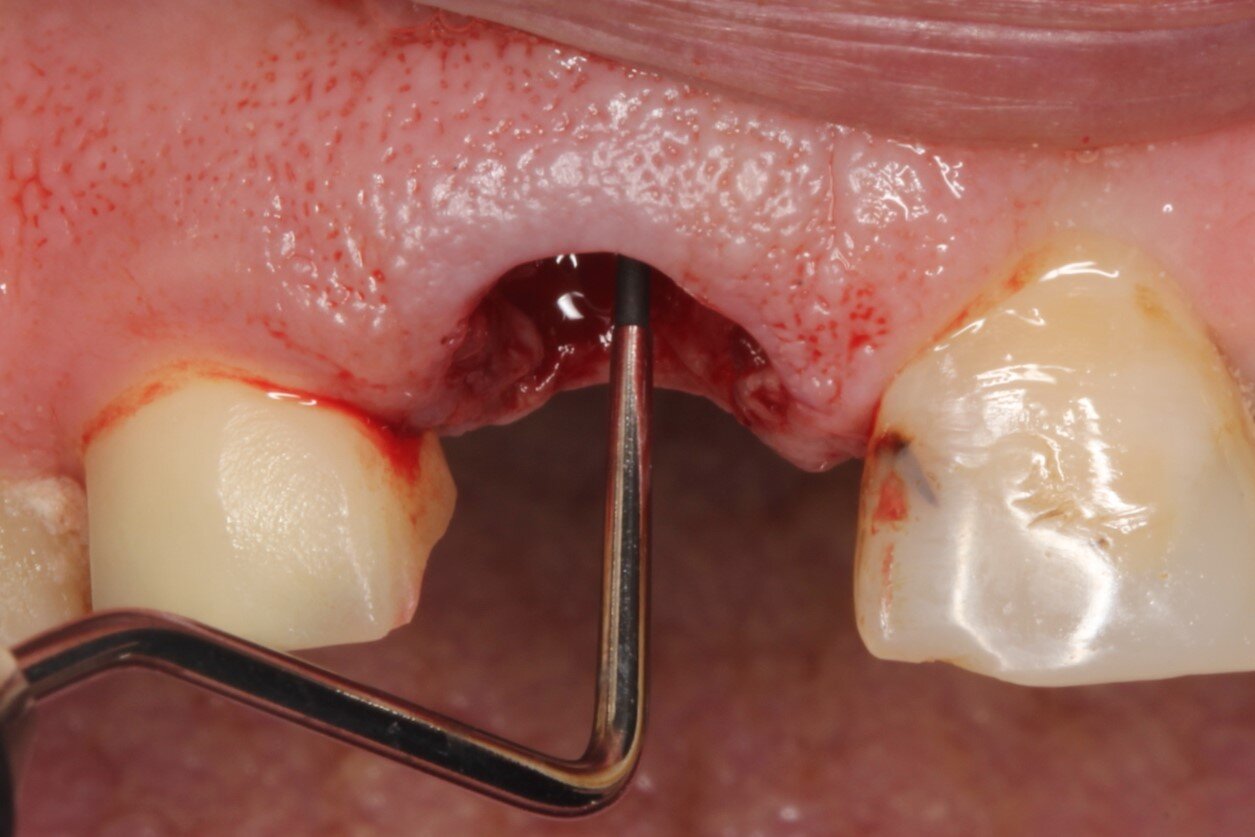A regular visit to your periodontist should be part of your overall health and wellness plan. Patients identified by their general dentist, hygienist, or if individuals wish to seek their own periodontal evaluations are always welcome. And while a bi-annual dental checkup and cleaning are necessary, they might not be enough to address underlying concerns for certain individuals.
The American Academy of Periodontology recommends that all adults undergo a comprehensive periodontal evaluation once a year.
Periodontal Disease
With periodontal disease affecting nearly 64.7 million people in the United States (almost one in every two adults over the age of 30), the health of your gums should be monitored consistently to minimize your risk. Many patients don’t see a dental professional until after they’ve noticed pain, bleeding gums, or loosening teeth― all signs that periodontal disease is in its advanced stages. An annual comprehensive periodontal evaluation can detect periodontal disease before it becomes severe, and is the first step to creating a suitable treatment and/or maintenance plan for your individual situation.
Implant Therapy
As specialists in treating gum tissue and the underlying bone in the mouth, periodontists are uniquely qualified to place and maintain dental implants. Periodontists receive three additional years of training after dental school to master the surgical skills needed to provide predictable and successful dental implant treatment.
Extraction and Ridge Preservation
Ridge preservation or augmentation procedures are often performed to correct irregularities in the gums and jaw after a tooth extraction. A periodontist may also perform a ridge preservation/augmentation to prevent the jawbone from collapsing after a tooth extraction. A ridge augmentation may be needed to allow the placement of a properly sized and positioned dental implant.
Crown Lengthening
Crown lengthening is a procedure where excess gum tissue is removed to expose more of the “crown,” the white enamel-covered part of the tooth. This procedure is performed on patients who either have fractured their tooth or have a “gummy smile” in which the teeth appear too short or the gum line seems uneven. The procedure, which can be administered to one tooth or to enhance your entire smile, reshapes excess gum and bone tissues to expose more of the natural tooth.
Guided Tissue Regeneration
A bone and tissue graft procedure helps to regenerate any tissue or bone lost to periodontal disease through the placement of natural or synthetic bone material to promote bone growth. These procedures are indicated in areas where localized bone loss has occurred and the cause can be identified and treated.
Recession or Mucogingival Defects
Root coverage procedures are often used to treat gums that have receded to the point that the roots of a tooth are exposed. During a root coverage procedure, your periodontist will take gum tissue from the roof of your mouth (known as the palate) to cover roots, develop gum tissue where needed, or make dental implants look more natural. In some cases, this procedure can cover exposed roots to protect them from decay or to prepare your teeth for orthodontic treatment. Soft tissue grafts can utilize synthetic material or tissue from the mouth to cover tooth roots that have been exposed.
Periodontal Plastic Surgery or Combined Procedures
Combined procedures, working across dental disciplines, and cosmetic surgery can help people improve their looks, several periodontal plastic surgery procedures are available to help enhance the aesthetics of your smile. The following are some common treatments: esthetic crown lengthening, gingivectomy, frenectomy, and soft tissue grafting. Periodontal plastic surgery is used to lay the foundation for further cosmetic enhancements, such as orthodontic devices and veneers. A combination of periodontal procedures can result in a beautiful new smile and improved periodontal health.








